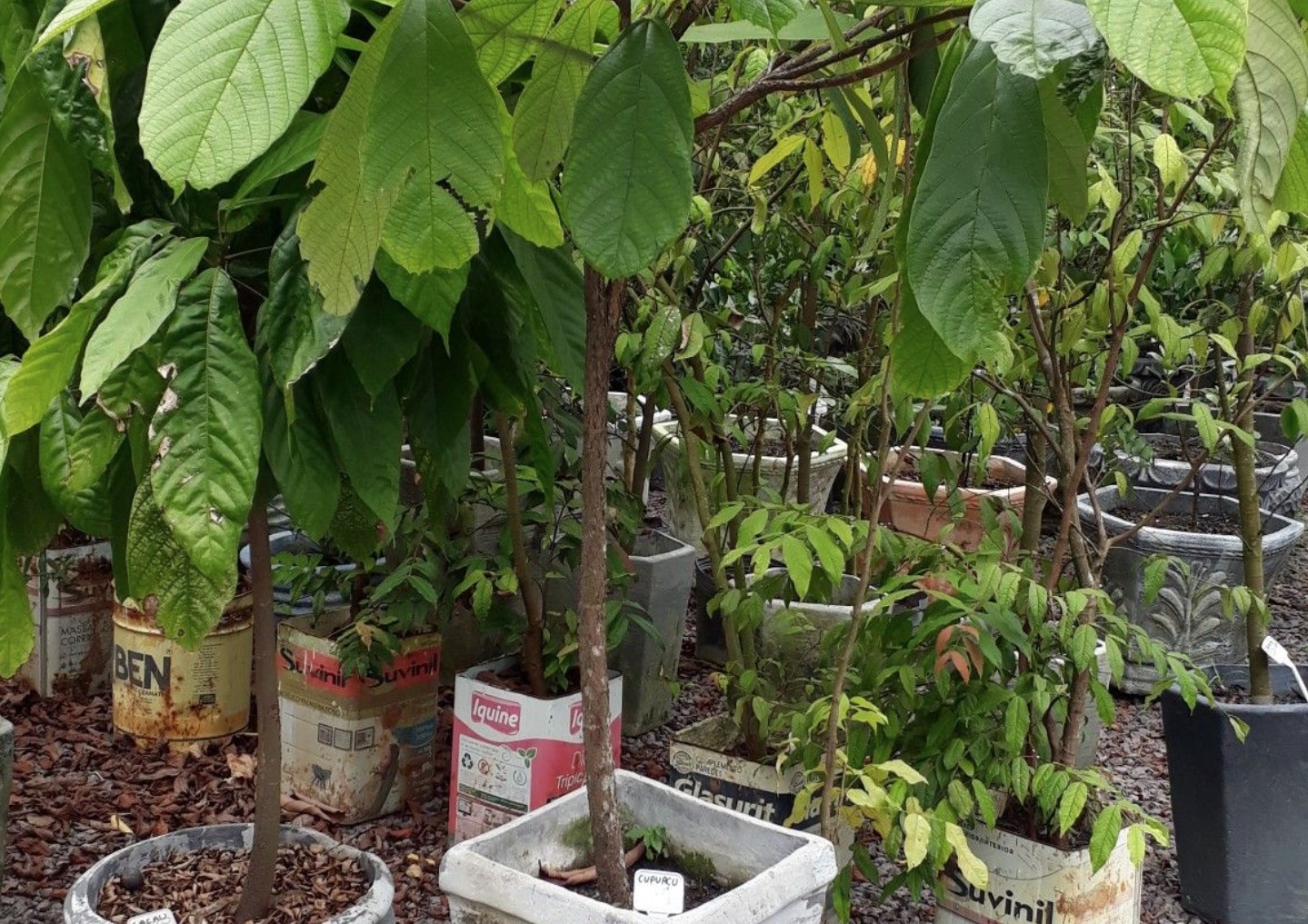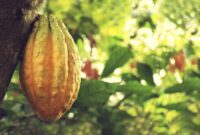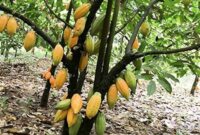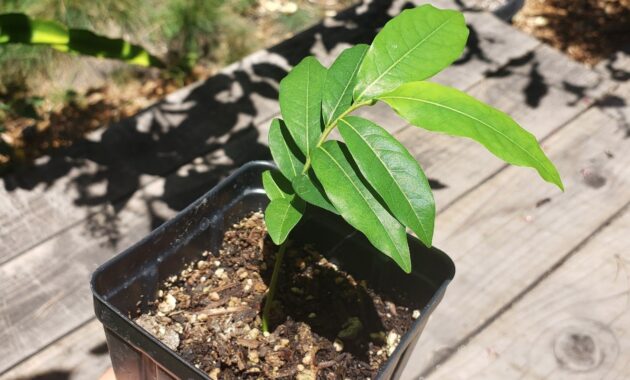
Have you ever heard of Theobroma grandiflorum? If not, let me introduce you to this incredible plant, commonly known as Cupuaçu. This exotic fruit-bearing tree is a close relative of cacao and is celebrated for its delicious fruit and unique flavor profile. My journey into the world of Cupuaçu began when I stumbled upon it in a tropical fruit market, and I’ve been captivated ever since!
What is Theobroma grandiflorum?
Theobroma grandiflorum, or Cupuaçu, is a tropical tree native to the Amazon rainforest, primarily found in Brazil, Peru, and Colombia. It belongs to the same genus as cacao, making it part of the rich family of plants that produce some of the world’s most beloved flavors. The Cupuaçu tree is known for its large, fragrant flowers and unique, creamy fruit that offers a delightful taste reminiscent of chocolate and tropical fruits.
Key Characteristics of Theobroma grandiflorum:
- Scientific Name: Theobroma grandiflorum
- Common Names: Cupuaçu, Cupuassu
- Height: Grows up to 5-10 meters (16-33 feet)
- Leaves: Large, glossy, dark green leaves that can reach up to 30 cm (12 inches) in length
- Flowers: Large, creamy white to pale yellow flowers that bloom directly from the trunk
- Fruit: The Cupuaçu fruit is oblong and can weigh between 1-2 kg (2-4 lbs), with a hard shell that protects the soft, creamy pulp inside.
The Rich History of Cupuaçu
The history of Cupuaçu is intertwined with the indigenous cultures of the Amazon basin. Traditionally, the fruit was highly valued for its nutritional properties and was often used in local cuisine. Indigenous tribes utilized Cupuaçu in various ways, from making beverages to using it in medicinal preparations.
I recall visiting a local market in Brazil, where I learned about the deep-rooted cultural significance of Cupuaçu. The vendors spoke with pride about how their ancestors cultivated the tree, and the respect for this fruit was palpable. Today, Cupuaçu is gaining popularity worldwide for its unique flavor and health benefits, but its origins in the Amazon remain a crucial part of its identity.
The Lifecycle of the Cupuaçu Plant
Understanding the lifecycle of the Theobroma grandiflorum plant can deepen our appreciation for the journey from seed to fruit:
- Seed Germination: Cupuaçu seeds are typically planted in nutrient-rich soil. Germination usually takes about 2-3 weeks. I find it exciting to watch the first shoots appear, knowing that a beautiful tree will eventually grow from them!
- Young Plant Development: As the seedlings mature, they develop into young trees with large, lush leaves. It typically takes about 3-5 years for Cupuaçu trees to begin flowering and fruiting.
- Flowering: The tree produces stunning flowers directly from the trunk and branches. The flowers have a distinct fragrance, attracting various pollinators, including bees and other insects. The sight of these flowers blooming is a beautiful reminder of nature’s artistry.
- Fruit Formation: After successful pollination, the flowers give way to fruit. The Cupuaçu fruit grows quickly and can take about 5-6 months to mature. When I see the fruit develop, I feel a sense of anticipation for the delicious treats to come!
- Harvesting: When the fruit ripens and turns a light brown color, it is ready to be harvested. The pods are carefully cut from the tree, and this process requires precision to avoid damaging the plant.
Culinary Uses of Cupuaçu
Cupuaçu is often referred to as a “superfruit” due to its rich flavor and numerous culinary applications. Here are some of the delightful ways I’ve enjoyed Cupuaçu:
- Beverages: The pulp of the Cupuaçu fruit is often blended into smoothies, juices, and even alcoholic beverages. I’ve experimented with Cupuaçu smoothies, and the creamy texture paired with banana and coconut milk is simply divine!
- Desserts: Cupuaçu can be used in a variety of desserts, from ice creams and mousses to cakes and pastries. The flavor is often described as a combination of chocolate, banana, and pineapple, which makes for an extraordinary dessert experience.
- Chocolate: Cupuaçu is sometimes referred to as “the chocolate of the tropics” and can be processed into a creamy, chocolate-like product. I’ve tried Cupuaçu chocolate bars, and they offer a unique taste that’s both sweet and slightly tart.
- Cosmetics: The seeds of the Cupuaçu fruit can be processed into a rich butter, often used in cosmetics and skincare products. The moisturizing properties of Cupuaçu butter make it a popular ingredient in lotions and creams. I’ve used Cupuaçu butter in my skincare routine, and my skin has never felt better!
Health Benefits of Cupuaçu
Beyond its delicious taste, Cupuaçu is packed with health benefits that make it a worthwhile addition to your diet:
- Rich in Nutrients: Cupuaçu is a good source of vitamins and minerals, including vitamin C, calcium, and antioxidants. Whenever I enjoy Cupuaçu, I know I’m treating my body to something nutritious!
- Boosts Immunity: The high levels of antioxidants in Cupuaçu help support the immune system and combat oxidative stress. Incorporating Cupuaçu into your diet can be a delicious way to stay healthy.
- Energy Booster: Cupuaçu contains theobromine, a compound similar to caffeine, which can provide a natural energy boost without the jitters. I often turn to Cupuaçu smoothies before a workout for a quick energy lift.
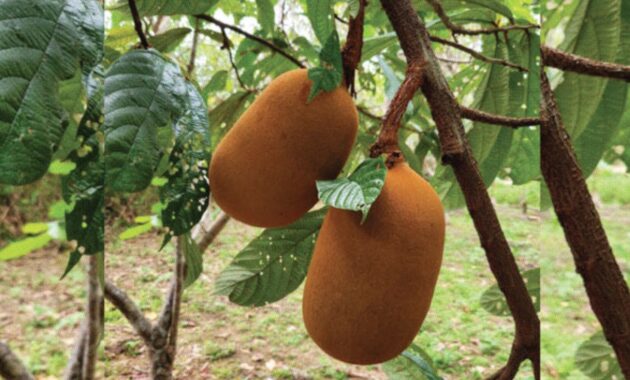
Growing Your Own Cupuaçu Plant
If you’re inspired to grow your own Theobroma grandiflorum, here are some essential tips I’ve gathered:
- Climate Requirements: Cupuaçu thrives in tropical climates with temperatures between 20°C to 30°C (68°F to 86°F). They prefer high humidity and should be protected from strong winds. I recommend creating a microclimate if you live in a cooler area.
- Soil Conditions: Cupuaçu trees prefer well-draining, loamy soil rich in organic matter. Maintaining a pH level between 6 to 7 is ideal. I often enrich the soil with compost to provide nutrients.
- Watering: Regular watering is crucial for Cupuaçu trees, especially during dry periods. However, be cautious not to overwater, as excess moisture can lead to root rot. A moisture meter has become my best friend when it comes to ensuring the right balance!
Caring for Your Cupuaçu Plant
Proper care is essential for a thriving Cupuaçu tree. Here are some tips I’ve found helpful:
- Fertilizing: Cupuaçu trees benefit from regular feeding. I recommend using a balanced fertilizer every 6-8 weeks during the growing season. Organic fertilizers work wonders for healthy growth!
- Pruning: Regular pruning helps maintain the shape of the tree and encourages airflow. I tend to prune during the dry season, allowing for fresh growth when the rains arrive.
- Pest Management: Watch for pests such as fruit flies and scale insects. Organic pest control methods, like neem oil, can be effective while keeping beneficial insects safe. A proactive approach has saved my plants from potential infestations.
Common Challenges in Growing Cupuaçu
While growing Cupuaçu is rewarding, challenges may arise:
- Pest and Disease Susceptibility: Like many tropical plants, Cupuaçu trees are prone to pests and diseases. Regular inspections and preventive measures are essential for healthy growth.
- Temperature Sensitivity: Cupuaçu is sensitive to cold temperatures, so protecting your tree during unexpected cold snaps is crucial. I learned to cover mine with frost cloth during chilly nights!
- Slow Growth Rate: Patience is key with Cupuaçu trees. It can take several years for them to mature and bear fruit. I always remind myself that good things come to those who wait!
Final Thoughts
Theobroma grandiflorum, or Cupuaçu, is a remarkable plant that offers not only a delicious and versatile fruit but also a glimpse into the rich cultural heritage of the Amazon. Whether you’re enjoying a creamy Cupuaçu smoothie or growing your own tree, this plant brings the taste of the tropics to your life.
So the next time you indulge in a Cupuaçu treat, take a moment to appreciate the journey from tree to fruit. It’s a delightful reminder of nature’s bounty and the connection we share with the world around us.
Let me know if you need more information or have any other topics in mind!
